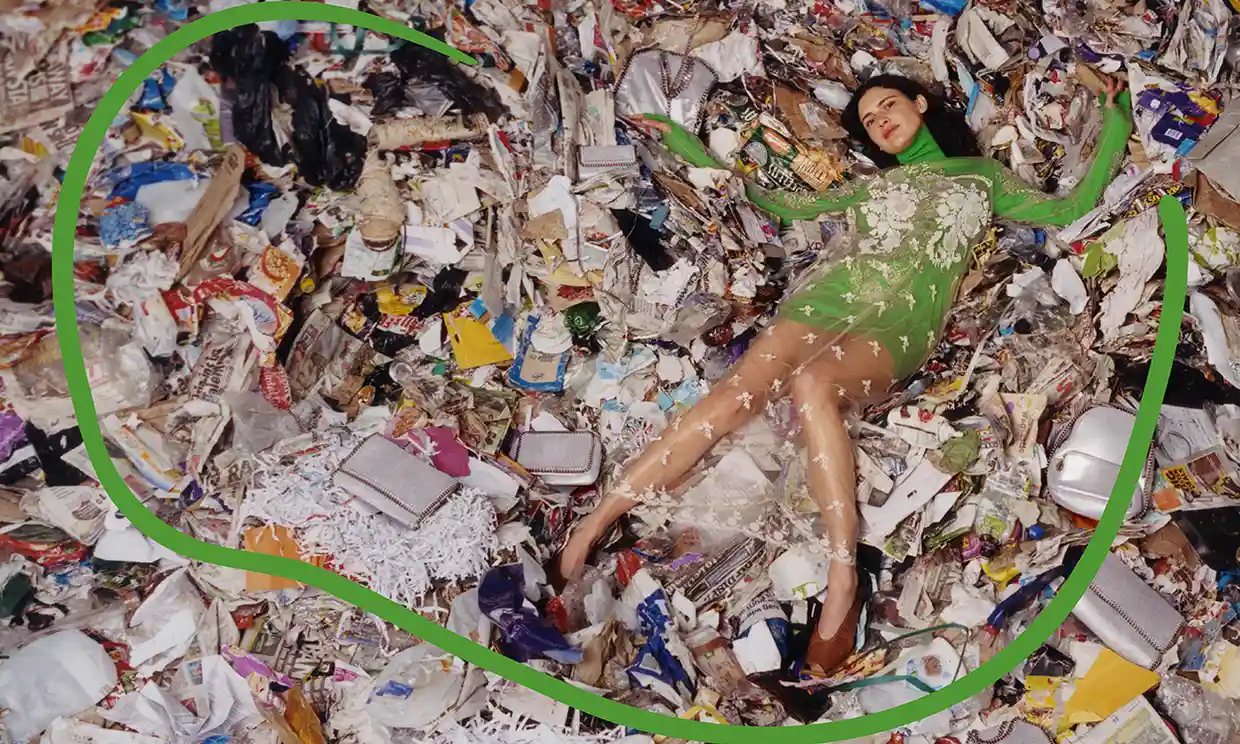Fast fashion has changed the way we think about our wardrobe, but what is the true impact of cheap clothing? As we incre asingly prioritise affordability, are we ignoring another crucial factor – environmental consequences? This post will uncover the impact of cheap clothing on our planet and explore the hidden costs of fast fashion. So join me on this journey as I explore how fast fashion has redefined our clothing industry.
Introducing Fast Fashion and its Rise in Popularity
Are you a fashionista who loves the latest trends and feels stylish? Are you constantly on the hunt for bargains to save money? Do you love exploring stores and coming back with armloads of clothing finds at unbeatable prices? Fast fashion companies now dominate our society with promises of providing the latest trends at remarkably low prices. There is no doubt that fast fashion has revolutionised the way we shop and dress ourselves.
Before the 2000s, when fast fashion was not as popular, shopping for clothes was a day-long affair. We would start at one store and move to the next, poring over every item before making a decision. But now with fast fashion, shopping is quicker, easier, and more affordable than ever. Fast fashion retailers produce new styles rapidly, often within weeks of seeing a new trend on the runway.
This approach has allowed consumers to keep up with ever-changing fashion trends without breaking the bank. With clothing sales doubling from 100 to 200 billion units a year, it’s clear that the demand for clothing is higher than ever. Furthermore, it’s crucial to note that there has been a 36% overall decrease in the average number of times people wear an item.

Exploring why people are drawn to Cheap Clothing
Fast fashion has gained significant popularity in recent years and it’s not hard to see why. Cheap clothing that’s on-trend and readily available is a tempting proposition for anyone looking to stay fashionable without overspending. It’s low in cost, easily accessible, and offers a never-ending variety of styles to choose from. Fast fashion also taps into our desire for immediate satisfaction, as we can have a new outfit in a matter of days, rather than waiting weeks or even months for designer clothing.
Sounds amazing, right?
Well, if we go a step further and look behind the curtain we will see the alarming consequences. From greenhouse gases and pollution to the exploitation of human rights, fast fashion is at the forefront of many of our biggest environmental and social issues. So let’s take a look at fast fashion and its impact on the environment.
Investigating the Impact of Cheap Clothing
Looking beneath the surface we can see that the real cost of cheap clothing extends beyond our wallets and affects the planet we call home. Mass production of clothing involves a tremendous amount of energy, water, and other resources which contribute to carbon emissions and pollute our natural resources. Did you know that the fashion industry, believe it or not, ranks as the third largest polluting industry? Surprisingly, it actually emits more greenhouse gases than the combined emissions of international shipping and aviation!
1. Water
Have you ever thought about how much water goes into making your favourite shirt? Picture a standard storage container filled up with water. That’s more than 2500 litres only for one cotton shirt. It’s hard to wrap your head around, isn’t it?
The reason why it takes so much water is that cotton, the primary material in most denim, is an incredibly thirsty crop. From irrigation during growth to the multiple washes during the manufacturing process, the water footprint of a single shirt is immense. Not to mention the fact that many cotton-growing regions are water-stressed, making the extraction of this essential resource even more problematic.
2. Microplastics
Every time synthetic clothing is washed, it sheds tiny plastic fibers known as microplastics. These microplastics, less than 5mm in diameter, end up in our water systems and eventually into our oceans, contributing to the already monumental plastic pollution crisis. According to IUCN, 35% of the plastic pollution in our ocean comes from washing synthetics clothes. And yes, through the food chain, microplastics inevitably end up in our diets. The tiny particles contaminate not only seafood but a wide variety of foods we consume daily.
3. Worker Exploitation

After considering the environmental impact of cheap clothing we need to ask ourselves who pays the price for us to enjoy the latest trends? It is the workers themselves who face the harsh realities. They are subjected to long hours, low wages, and unsafe working conditions. Exposed repeatedly to toxic substances during the production process, these individuals risk their well-being to supply our demands. Their exploitation fuels an unjust system that values profit over people.
Impact of Cheap Clothing by numbers
- We discard 92 million tons of clothes-related waste each year
- 20% of global water waste is caused by the fashion industry
- 93% of surveyed fashion brands do not pay their workers a living wage
- 80% of fashion workers are women, routinely paid less than their male counterparts
- We find ourselves buying 60% more clothing than we did fifteen years ago.
Looking Ahead – the future of Fashion and Sustainability
But it’s not all doom and gloom – there is hope for change. If we can continue working together to raise awareness around conscious consumerism while supporting businesses rooted in sustainability, then there certainly lies a brighter future ahead for us all!
So let’s start investigating the real cost of cheap clothing and make more conscious fashion choices. Because, ultimately, it is up to us, as informed consumers, to make conscious decisions when buying fashion. Here at ametou, we want our customers to not only look good but also do good; we offer a range of products that are crafted with care, so come visit our store and discover our unique pieces!
Stay tuned for our upcoming post titled “Unveiling the Power of Ethical Fashion: Combating Exploitative Labor Practices in the Fashion Industry” for a deeper exploration of ways to combat exploitative labor practices.





There are no comments